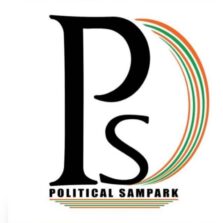As the Delhi Assembly elections approach, the political atmosphere is charged with excitement and anticipation. With the election date set for February 5, 2025, both the Aam Aadmi Party (AAP) and the Bharatiya Janata Party (BJP) are ramping up their campaigns, each vying for the support of the electorate. Here’s a closer look at the current political landscape, key issues, and strategies being employed by both parties.
Current Political Climate
The AAP, led by Chief Minister Arvind Kejriwal, is seeking to retain its position by emphasizing its achievements in governance, particularly in education and healthcare. The party has implemented several welfare schemes that have garnered significant public support.
On the other hand, the BJP is determined to reclaim power in Delhi, focusing on allegations of corruption against the AAP government and questioning its effectiveness in implementing central government schemes. The BJP’s strategy revolves around presenting itself as a party of development and accountability.
Key Issues at Stake
-
Welfare Schemes vs. Sustainable Development:
- AAP is promoting its welfare initiatives, including free electricity and water, which have been popular among voters. However, critics argue that these “freebies” may not be sustainable in the long run.
- The BJP counters this narrative by emphasizing the need for responsible governance and infrastructure development, arguing that welfare schemes should not come at the cost of long-term growth.
-
Safety and Law & Order:
- With rising concerns about safety, especially for women, both parties are addressing law and order in their campaigns. The BJP is focusing on its commitment to improving safety measures, while AAP is highlighting its efforts in community policing.
-
Economic Concerns:
- High youth unemployment and inflation are pressing issues that both parties are addressing. AAP is promoting its welfare schemes as a solution, while the BJP is focusing on economic management and job creation.
Campaign Strategies
-
Digital Outreach: The BJP has announced a comprehensive digital media strategy, deploying 10,000 social media experts to engage voters online. This includes targeted content creation and real-time data analysis to adapt their messaging effectively.
-
Grassroots Mobilization: AAP plans to hold over 65,000 community meetings to connect directly with voters, showcasing their achievements and future plans. This grassroots approach aims to build a strong rapport with local communities.
-
Social Media Engagement: Both parties are leveraging social media platforms to reach younger voters. Engaging content, including videos, infographics, and live interactions, will be crucial in capturing the attention of the electorate.
Voter Engagement Initiatives
-
Direct Engagement: AAP’s “Revdi Pe Charcha” campaign focuses on discussing its welfare schemes and their benefits, countering the BJP’s narrative that these are mere “freebies.”
-
Community Events: The BJP is organizing community events to foster direct interaction with voters, addressing their concerns and presenting their vision for Delhi.
Conclusion
As the election date approaches, the political dynamics in Delhi are intensifying. The interplay of controversies, campaign strategies, and voter engagement will be crucial in determining the outcome of the assembly elections. Both AAP and BJP are gearing up for a fierce battle, making it essential for them to address the electorate’s pressing concerns effectively.
With the stakes high and the electorate eager for change, the upcoming weeks will be pivotal in shaping the future of Delhi. Stay tuned for more updates as we continue to cover the unfolding political drama in the capital!
